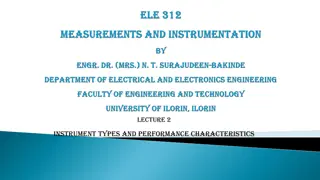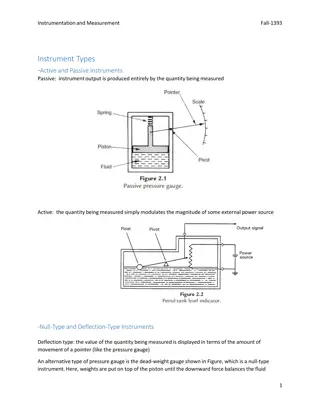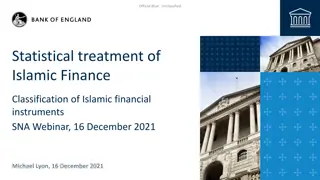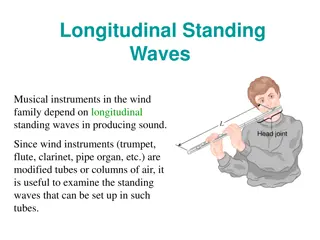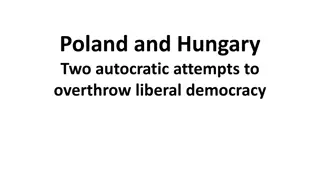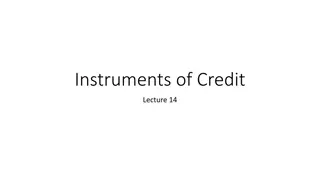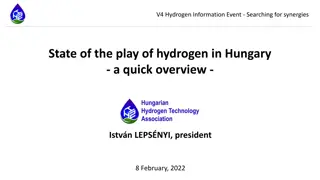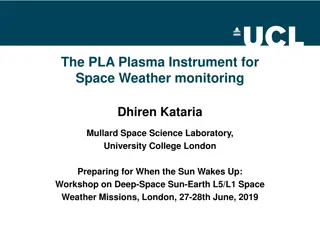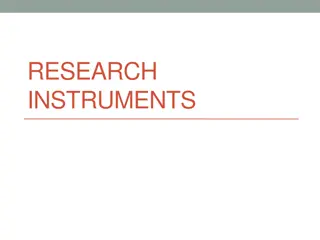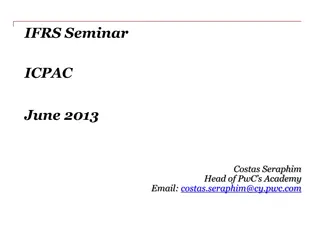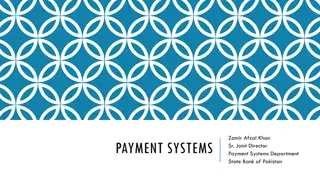Evolution of Planning Systems and Instruments in Hungary with EU References
Explore the evolution of planning systems and instruments in Hungary with special reference to EU integration. Discover the varied domestic planning systems within EU traditions and the introduction of diverse instruments from 2002 to 2017, as analyzed by Gza Salamin. Learn about the European Model of Spatial Planning (EMP) and the changing landscape of regional policies and strategies. Delve into the dynamic shifts in integrated development strategies and the emergence of new planning activities under EU cohesion policy.
Download Presentation

Please find below an Image/Link to download the presentation.
The content on the website is provided AS IS for your information and personal use only. It may not be sold, licensed, or shared on other websites without obtaining consent from the author. Download presentation by click this link. If you encounter any issues during the download, it is possible that the publisher has removed the file from their server.
E N D
Presentation Transcript
Integrated Integrated development development instruments context of context of domestic domestic planning special special reference reference to to Hungary instruments in planning systems systems, , with Hungary in the the with G za Salamin PhD President, Hungarian Society for Urban Planning
The The E EU Uropean ropean Model of Spatial Planning (EMP) Model of Spatial Planning (EMP) A model of directions of changes based on main statements of European planning literature and content analisis of relevant EU strategies and policy documents Functional territories, soft spaces with fuzzy borders, etc Source: Salamin 2019
Diverse Diverse domestic domestic planning planning systems systems in in the the EU EU European traditions (types) of spatial planning Land use managament BE, IE, LU, UK, HU, CY, CZ, MT (PT, ES) Comprehensive integrated AT, DK, FI, NL, SE, DE, NO, BG (UK, BE, FR, IE, LU, EE,, LV, LT, PL, RO, SL, SK) Regional economic PT, FR, DE, HU, LV, LT, (IE, SE, UK) Urbanism GR, IT, ES, CY, MT Source: Salamin 2018 based on EC 1999, Nadin, V. Stead, D. 2008, Farin si-Das eds. 2006, D hr S etal 2010.
More and more More and more instruments instruments.. .. Change of existence of different types of plans on different scales (2002-2017) (Number of countries) Type of planning Integrated development strategy (addressing more policies) introduce d Spatial Total change by levels Physical/land use plan (zoning) Building control (regulation) strategy/vision/conce pt Level /space introduce d introduce d introduced abolished introduced abolished 1 4 1 5 2 5 2 3 1 7 3 7 2 8 2 1 1 42 13 abolished 1 4 1 1 abolished 1 abolished 4 7 6 5 Federal State Regional (NUTS2) Regional (NUTS3, subregion) Local-municipal Part of city (Sub-local) Border crossing Transnational Cityregion, FUA Other functional Total change 1 2 3 3 2 5 2 7 5 7 8 4 8 5 11 2 57 1 1 1 14 16 15 10 9 17 12 22 3 118 1 2 2 1 6 5 4 1 39 1 1 1 1 1 1 1 1 3 16 12 10 3 4 Source: Salamin 2018 (Based on key expert survey)
Have Havenew of EU of EU cohesion cohesion(regional) policy (regional) policy or or its new types typesof of plans plansor or new new planning planning activities its sources sourcessince activitiesemerged since 2002? emerged by 2002? by the the motivation motivation East: PL, HU, CZ, SK, SL, HR, SRB, RO, EE, LV, LT North and West: AT, FR, UK, IE, SE, NO, FI, DK, DE, LU, BE, NL, CH, South: IT, PT, MT, CY, GR, ES Source: Salamin 2018 Questionnaire survey (M:120)
L Level evel and countries countries (C (Composite and dynamics dynamics of Europeanization of spatial planning in of Europeanization of spatial planning in omposite based on based on dimension dimension 1,2,4,5 of EMP 1,2,4,5 of EMP) ) Source: Salamin 2018
Sources Sourcesof Cohesion Policy of Cohesion Policy implemented the Europeanization of the Europeanization of spatial implemented in spatial planning planning between in territorial territorial type between2002 2002- -2017 type programmes programmes and 2017 and programmes per a head (with cofinance) Sources of territorial type operational Europeanization of planning (2002-2017) Source: Salamin 2018
Cohesion policy support delivered via ITI Cohesion policy support delivered via ITI ERDF, ESF and CF allocation by MS Programming results 20 MS use ITI 15 MS to deliver SUD 13 MS for other territories Total of EUR 13.8 billion ERDF 11.8 bn ESF 1.7 bn CF 0.3 bn 12 MS use both funds Concentration 80% by 9 MS 28% by PL alone 60% for SUD Article 7 Source: European Commission 2016
Cohesion policy support to CLLD Cohesion policy support to CLLD ERDF and ESF allocation by MS Programming results 18 MS apply CLLD in CP EUR 1.8 billion ERDF 1.1 bn (0.6%) ESF 0.7 bn (0.8%) For comparison: EAFRD 6.9 bn (7%) EMFF 0.5 bn (9%) 14 MS use both funds GR, HU, PL, PT, SE via multi-fund OP Concentration 92% by 9 MS 25% by CZ alone Source: European Commission 2016
Integrated Integrated development development without without ITI: ITI: Case Caseof Hungary of Hungary Integrated Territorial Programmes as a share of Territorial and Settlement Development (TOP) OP budget (2014-2020) (TOP Total: 4338,39 million EUR) Integrated Territorial Programmes as a share of the Competitive Central Hungary OP (CCHOP) budget (2014-2020) (CCHOP Total: 938,71 million EUR) 5,04 % 9% 7,61 % 3% 0,28 % 59% 87,07 % 29% Pest County Budapest rd CCHOP Other TOP County ITP TOP Cities with County Rights ITP TOP CLLD Source: Calculations based on 1702/2014. (XII. 3.) , 1707/2014. (XII. 3.) and Minisztereln ks g 2018. TOP Other
Integrated Integrated development development without without ITI: ITI: Case Caseof Hungary of Hungary The share of integrated territorial programmes in the total ESIF allocation (2014-2020) (Total ITPs with Other ESI Fund: 38709,68 million EUR) 10.26 % 0.31 % TOP ITP 89.43 % CCHOP ITP Other ESI Funds Source: Minisztereln ks g 2018.
Main conclusions and recommendations of the evaluation of Main conclusions and recommendations of the evaluation of Hungarian ITP Hungarian ITP evalutaion evalutaion( (by by HBH) HBH) The ITP is appropriate instrument for the public development, which is based on local development needs and taking into account territorial aspects. 1. Preparation and institutional capacity of territorial actors should be developed to strengthen territorial planning and the implementation, monitoring and control capacity of territorial stakeholders. It can help to strengthen the strategic responses to territory specific needs. 2. Programme cycle understanding of ITP should be strengthened, wich could further clarify the tasks and relations of the relevant territorial actors (counties cities with county rights). 3. Territoriality (place based cntent) of the ITP-s should be strengthened e.g. by stronger connection with territorial strategies, further guidance on the content of ITP-s. Stronger and transparent link between territorial strategy and project selection. 4. The link between county ITP and city ITP-s is weak, thus new types of territorial structures (functional urban area, thematic areas, regional ecosystem) of integrated development should be introduced and strengthening the territorial integration of projects, applying a multi-municipal project approach Source: HBH Strat gia s Fejleszt s Kft 2018
Personal Personalconclusions conclusions Territorial instruments are adequate and efficient tools to support both EU and national policy goals in an integrated way. They can be used efficiently if they are harmonised with (or integrated in) the domestic spatial-urban planning-development system. The specifics of domestic planning-development systems should be taken into account in Cohesion Policy implementation. The transformation tendencies of domestic planning systems and practices are mostly supporting integrated developments (but there are differences between countries). The spread of integrated approach of planning in domestic systems is important for this integration. Flexibility is needed in in the implementation of Cohesion Policy: integrated development can be achieved in very different ways in different forms depending on the characteristics of planning development system of the specific country.
Thank you for attention! president@mut.hu geza.salamin@uni-corvinus.hu Sources: SALAMIN, G (2018): EUROPEANIZATION OF SHAPING GEOGRAPHIC SPACE - The influence of the European Union's spatial planning, strategies, and Cohesion Policy on the transformation of the spatial planning systems of European countries. (PhD research report) SALAMIN, G (2019): European trends in planning - Lessons from a survey on changes of spatial planning. https://www.plymouth.ac.uk/uploads/production/document/path/15/15367/13th_European_Biennial_of_Towns_and_Town_Planners_2019_Final_Programme.pdf European Commission (2016): MATK , M rton, DG Regional and Urban Policy presentation: EG TCUM meeting, 23 June 2016 1702/2014. (XII. 3.) Gov.Decree HU 1707/2014. (XII. 3.) Gov.Decree; Minisztereln ks g (2018): A TOP f lid ben - V logat s a Ter let- s Telep l sfejleszt si Operat v Program t mogatott projektjeib l HBH Strat gia s Fejleszt s Kft (201 8): Az integr lt ter leti programok rt kel se - kutat si z r jelent s. https://www.palyazat.gov.hu download





